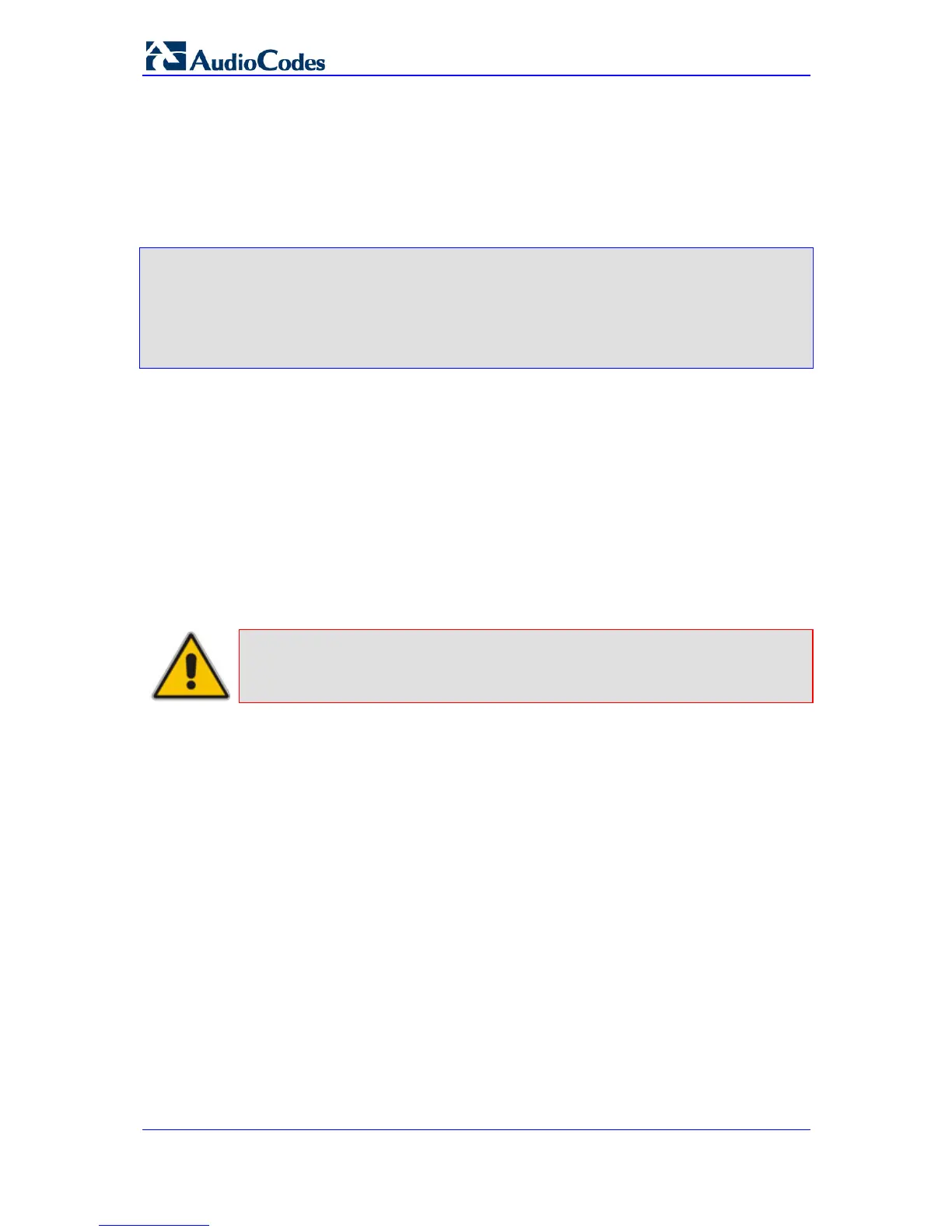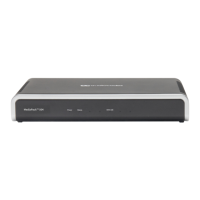SIP User's Manual 222 Document #: LTRT-65415
MediaPack Series
Typically, the Ringing and/or Call Waiting tone played is indicated in the SIP Alert-info
header field of the received INVITE message. If this header is not present in the received
INVITE, then this feature is used and the tone played is according to the settings in this
table.
For example, to configure Distinctive Ringing and Call Waiting tones of Index #9 in the CPT
file for FXS endpoints 1 to 4 when a call is received from a source number with prefix 2,
configure the following in the ini file:
[ToneIndex]
FORMAT ToneIndex_Index = ToneIndex_FXSPort_First,
ToneIndex_FXSPort_Last, ToneIndex_SourcePrefix,
ToneIndex_DestinationPrefix, ToneIndex_PriorityIndex;
ToneIndex_Index 0 = 0, 3, 2, , 1;
[\ToneIndex]
FirstCallWaitingToneID=8
Note that the Call Waiting tone index equals to the priority index plus
FirstCallWaitingToneID(*). For example, if you want to select the Call Waiting tone defined
in the CPT file at Index #9, then you can enter 1 as the priority index and the value 8 for
FirstCallWaitingToneID. The summation of these values equals 9, i.e., index #9.
7.2 Prerecorded Tones File
The CPT file mechanism has several limitations such as a limited number of predefined
tones and a limited number of frequency integrations in one tone. To overcome these
limitations and provide tone generation capability that is more flexible, the Prerecorded
Tones (PRT) file can be used. If a specific prerecorded tone exists in the PRT file, it takes
precedence over the same tone that exists in the CPT file and is played instead of it.
Note: The PRT are used only for generation of tones. Detection of tones is
performed according to the CPT file.
The PRT is a *.dat file containing a set of prerecorded tones that can be played by the
device. Up to 40 tones (totaling approximately 10 minutes) can be stored in a single PRT
file on the device's flash memory. The prerecorded tones are prepared offline using
standard recording utilities (such as CoolEdit
TM
) and combined into a single file using the
DConvert utility (refer to the Product Reference Manual).
The raw data files must be recorded with the following characteristics:
Coders: G.711 A-law or G.711 µ-law
Rate: 8 kHz
Resolution: 8-bit
Channels: mono
Once created, the PRT file can then be loaded to the device using AudioCodes'
BootP/TFTP utility or the Web interface (see ''Loading Auxiliary Files'' on page 170).
The prerecorded tones are played repeatedly. This allows you to record only part of the
tone and then play the tone for the full duration. For example, if a tone has a cadence of 2
seconds on and 4 seconds off, the recorded file should contain only these 6 seconds. The
PRT module repeatedly plays this cadence for the configured duration. Similarly, a
continuous tone can be played by repeating only part of it.

